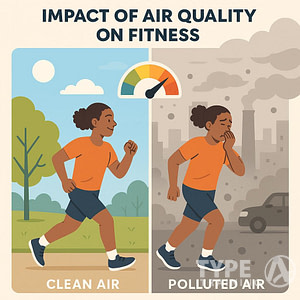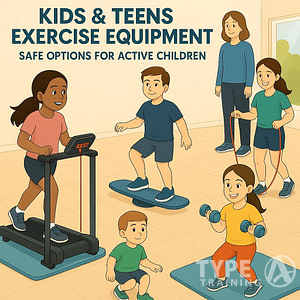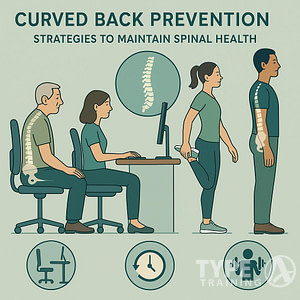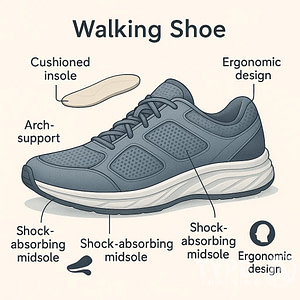Understanding how to use perceived exertion in your running routine can be a game-changer. The Rate of Perceived Exertion (RPE) allows you to accurately gauge how hard your body is working during your runs. This method can help you find the sweet spot between pushing too hard and not challenging yourself enough.
Many runners find that RPE is a more adaptable metric compared to pace or heart rate. It automatically adjusts for factors such as terrain, weather changes, and even your physical condition on any given day. This makes it a versatile tool for both beginners and seasoned runners aiming to maximize their training efficacy.
By incorporating RPE into your workouts, you can create a more personalized and flexible training plan. Understanding your body’s signals and adjusting accordingly can lead to more effective and enjoyable runs, ultimately enhancing your overall performance and fitness levels.
Popular posts:
Key Takeaways
- RPE provides an accurate gauge of workout intensity.
- RPE adjusts for environmental and physical factors.
- Incorporating RPE leads to more personalized training.
Understanding RPE and Its Importance
The Rate of Perceived Exertion (RPE) is a valuable tool for runners, helping you gauge the intensity of your workouts and tailor them to your body’s needs. Using the Borg Scale, you can measure effort levels from light to maximal exertion, making your training more responsive and effective.
The Concept of RPE in Physical Activity
RPE, developed by Gunnar Borg, helps you quantify your exercise intensity based on how hard you feel you’re working. The original Borg Scale ranges from 6 to 20, with modified versions like the CR10 scale being more intuitive, ranging from 1 to 10.
RPE captures your subjective experience, considering factors like heart rate, respiration, and muscle fatigue. This makes it more dynamic compared to fixed metrics like pace or heart rate zones.
By tuning into your body’s signals, you can adjust your exertion levels in real-time, providing a more personalized approach to training.
Benefits of Using Perceived Exertion in Training
Using RPE in your running routine offers several advantages. It allows you to train according to your daily physical condition, accounting for variables such as sleep, stress, and nutrition. This flexibility can lead to more consistent and injury-free training sessions.
RPE also helps in monitoring fatigue and improvements. For instance, running at an RPE of 7 on a well-rested day may be easier than on a tired one. Adopting RPE can enhance recovery by preventing overtraining, and improve performance by focusing on effort rather than just speed or distance.
The RPE Scale Explained
Understanding the Rate of Perceived Exertion (RPE) is crucial for fine-tuning your running intensity. You’ll encounter Gunnar Borg’s Original Scale and the Modified RPE Scale, each serving its unique purpose in evaluating your effort levels.
Gunnar Borg’s Original Scale
Gunnar Borg developed the original Borg RPE Scale in the 1960s. This scale ranges from 6 to 20, matching the approximate heart rate when multiplied by 10. For instance, a rating of 12 would correspond to a heart rate of roughly 120 beats per minute.
The main advantage of this scale is its precision. It offers specific descriptors at each level, such as “light,” “hard,” and “very hard,” allowing you to fine-tune your training sessions for optimal performance.
By using the Borg RPE Scale, you can better gauge the intensity of your workouts, especially when included in broader training plans.
The Modified RPE Scale
The Modified RPE Scale simplifies things by using a 1-10 scale. This scale is easier to understand and apply, particularly for beginners.
Numbers range from 1 (very light) to 10 (maximum effort). It connects closely with daily activities, making it practical for various training conditions and personal fitness assessments.
One of the strengths of the 1-10 Scale is its flexibility. It allows you to account for factors like weather, terrain, and fatigue levels.
For instance, a run that feels like a 5 in cool weather might feel like a 7 in hot, humid conditions. This adaptability ensures that your training is responsive and aligned with your body’s current state, promoting effective and safe workouts.
For a deeper dive into these concepts, visit the Rate of Perceived Exertion for Running page.
Incorporating RPE into Running Workouts
Using the Rate of Perceived Exertion (RPE) helps you adjust your workout intensity based on how your body feels, making your training more effective and responsive to day-to-day variations. Here’s how to integrate RPE into various types of running workouts.
Easy Runs
Easy runs are essential for recovery and endurance building. Aim for an RPE of 2-3 on a scale of 1-10.
This means you should be able to carry on a conversation without gasping for air.
Use these runs to maintain a steady pace without overexerting yourself. These workouts should be comfortable, allowing you to focus on form and relaxation. They’re perfect for recovery days and building aerobic capacity.
Tempo Runs and Intervals
For tempo runs and intervals, target an RPE of 7-8.
These runs are more intense and should feel challenging but sustainable over the workout duration.
Tempo runs involve running at a “comfortably hard” pace that you could maintain for about an hour. Meanwhile, intervals alternate between high-intensity efforts and periods of rest or low-intensity running.
Focus on pushing hard during the high-intensity segments while using the recovery periods to bring your exertion back down to an RPE of 2-3.
Long Distance and Marathon Preparation
When training for long-distance events or marathon preparation, integrate RPE to manage your effort over extended durations.
Aim for an RPE of 3-4 for long runs to ensure you’re building endurance without overfatiguing yourself.
These runs should feel relaxed yet steady, allowing you to cover significant distances while still being able to communicate intermittently.
For marathon pace runs, target an RPE of 5-6, simulating the effort required on race day.
Training at these levels teaches your body to sustain a consistent pace over long periods, crucial for marathon success.
Monitoring Intensity with RPE
Using the Rate of Perceived Exertion (RPE) allows you to monitor how hard your body is working during a run. It offers a flexible way to gauge intensity, especially when heart rate data isn’t available.
Balancing Heart Rate and Perceived Exertion
To get the most out of your runs, it’s beneficial to balance heart rate data with RPE.
Heart rate monitors provide precise numerical data, while RPE offers subjective insights based on your feelings of exertion, sweating, and breathing.
For instance, a heart rate between 60-70% of your maximum is often considered a moderate training zone. If your muscles are slightly fatigued but you feel comfortable enough to hold a conversation, your perceived exertion might be around a 3 or 4 on a 0-10 scale.
This balance helps you adjust your workouts.
If you notice that your heart rate is unusually high but your perceived exertion is low, it might indicate dehydration or elevated stress. Conversely, if your heart rate is low but your RPE is high, you might be experiencing muscle fatigue or other physical discomforts.
Using RPE in Absence of Heart Rate Data
Sometimes, you might not have access to a heart rate monitor. In these cases, RPE becomes crucial.
RPE allows you to gauge training intensity based on personal feedback like muscle fatigue, breathing rate, and overall comfort.
For example, in the absence of heart rate data, you can utilize the RPE scale ranging from 0-10, with 0 being no effort and 10 being maximal effort.
If you aim for a steady-state run, you might target an RPE of 4-5, where you’re breathing harder and sweating but still able to speak in short sentences.
This method ensures you maintain the desired intensity and can effectively manage your training zones. You can quickly adjust by listening to your body’s signals, ensuring your runs remain productive and safe.
Adjusting Training According to RPE
Utilizing the rate of perceived exertion (RPE) scale allows you to customize your training load to suit your current level of fatigue and stress, helping to prevent overtraining and injury while ensuring optimal adaptation and recovery.
Tailoring Workload and Recovery
By regularly assessing your RPE during workouts, you can better match your training intensity to your body’s current capabilities.
When your perceived exertion is high, it indicates significant fatigue or stress. On these days, adjust your training load by reducing the intensity or distance of your run.
Conversely, when your RPE is lower, you can handle more strenuous workouts.
Planning recovery days based on your RPE helps in preventing overtraining. Opt for light runs or rest days when your perceived exertion remains high over consecutive sessions.
Keeping track of your daily RPE responses and adjusting accordingly can ensure balanced stress and recovery. This approach allows for better adaptation to training stimuli, maximizing performance gains while minimizing the risk of injury.
Preventing Overtraining and Injury
Using RPE as a guide helps you stay vigilant about the risks of overtraining. Taking note of consistently high RPE scores despite low-intensity workouts is a red flag that your body requires more recovery time.
Ignoring these signals can lead to overtraining syndrome, characterized by chronic fatigue and decreased performance.
Adjusting your training load by incorporating more rest or low-intensity sessions when needed helps in managing stress and preventing injuries.
High RPE scores also signal when it’s time to focus on strengthening weaker areas or addressing any musculoskeletal pain.
Preemptive adjustments informed by RPE can prevent common running injuries like shin splints or stress fractures. Use your perceived exertion as a preventative measure to keep your training on track while safeguarding your health.
RPE for Different Age Groups and Fitness Levels
Understanding how to adjust your Rate of Perceived Exertion (RPE) scale based on age and fitness levels can optimize your running workouts, ensuring both safety and effectiveness.
Age-Related Adjustments in RPE
Age significantly impacts how you should use the RPE scale. As you age, your body’s response to physical exertion changes. Older runners may find that their RPE levels for the same workout differ compared to younger runners.
For instance, what feels like a moderate effort (RPE 5-7) at 30 years old might feel more challenging at 60. Monitoring your body and adjusting your perceived exertion levels based on how you feel that day is crucial.
This personalized approach helps maintain a safe intensity level, minimizing injury risk.
Younger athletes might push closer to the high end of the RPE scale (7-9) for peak performance. Older runners should aim for a balance that considers their broader physical condition and recovery needs.
RPE for Beginners vs. Experienced Athletes
Comparing beginners to experienced athletes highlights different uses of the RPE scale. Beginners typically start with a lower RPE (around 3-5) to build endurance and fitness safely. For a new runner, this means staying in the very light to light effort zones.
Experienced athletes, on the other hand, might regularly train at higher RPE levels (6-9) to improve performance and endurance. Seasoned runners are familiar with their body’s signals and can push themselves harder without risking overtraining.
Beginners should focus on correctly identifying their RPE levels to avoid overexertion, while experienced athletes can fine-tune their training by incorporating RPE ratings to manage workout intensity and optimize performance.
Environmental and External Factors Affecting RPE
Environmental conditions and external elements such as weather and terrain, as well as equipment and nutrition, significantly impact your rate of perceived exertion (RPE) during running.
Weather and Terrain Impact
Weather conditions can alter your perceived exertion. High temperatures and humidity levels make your body work harder to cool itself, increasing sweat rates and elevating your RPE. Wind adds resistance, especially strong headwinds, making it feel like you’re expending more energy.
Terrain type greatly impacts your RPE as well.
Running on hilly or uneven trails requires more effort than flat pavement. Hills demand increased muscular effort and cardiovascular strain, making your run feel more difficult. On trails, you also have to navigate obstacles, which adds to the exertion level.
Equipment and Nutrition Influences
Proper equipment can lower your perceived exertion. Lightweight, well-cushioned
Nutrition before and during your run plays a pivotal role.
Proper hydration maintains performance and minimizes fatigue. Consuming carbohydrates before running provides energy, delaying onset of fatigue and keeping RPE manageable. Inadequate nutrition or hydration can make a workout feel significantly harder, increasing your RPE.
Interpreting and Applying RPE Data
By integrating the Rate of Perceived Exertion (RPE) with other training metrics, and setting clear goals, you can optimize your running performance. This section provides a detailed look at how to analyze RPE alongside other data points and how to use RPE to set and measure your training goals.
Analyzing RPE alongside Other Metrics
Combining RPE with other metrics such as heart rate, pace, and power output gives a comprehensive view of your training.
For example, when your RPE for a particular pace is lower than usual, it indicates improved fitness. Conversely, a higher RPE at the same pace may signal fatigue.
Key Metrics to Monitor:
- Heart Rate: Compare your RPE with heart rate data to gauge cardiovascular strain.
- Pace: Track how RPE changes with different paces to understand physical exertion.
- Power Output: For those using power meters, relate RPE to power output for targeted training.
Using a table can help you monitor these aspects:
| Metric | Low RPE | High RPE |
|---|---|---|
| Heart Rate | Lower cardiovascular strain | Higher cardiovascular strain |
| Pace | Faster and easier | Slower, harder effort |
| Power Output | Efficient performance | Potential overtraining |
Setting Goals and Measuring Progress
Setting goals using RPE allows for flexibility based on your body’s feedback. You can aim for a specific RPE range instead of a rigid pace or heart rate zone, which can help you adjust on days when your body feels off.
Steps to Set Goals:
- Determine Baseline: Conduct a few runs to establish your baseline RPE for different efforts.
- Set RPE Targets: Create workout plans with RPE targets for easy, moderate, and hard runs.
- Adjust as Needed: Be prepared to adjust based on how you feel daily.
Measuring Progress:
- Track Changes: Log your RPE after each run alongside other data points to track trends.
- Evaluate Performance: Regularly review logs to see if your RPE for specific workouts is decreasing, indicating improved fitness.
Frequently Asked Questions
Understanding how to use perceived exertion in running can significantly enhance your workout efficiency and performance. Below are common questions regarding the use of Rate of Perceived Exertion (RPE) in running.
What is RPE and how is it applied to running?
RPE, or Rate of Perceived Exertion, is a scale used to measure the intensity of your exercise based on how hard you feel you are working. In running, it’s applied by choosing an effort level on the scale, which ranges typically from 1 to 10, to guide your workout intensity.
How can you determine your running RPE using heart rate data?
RPE can be correlated to heart rate zones. For instance, a very light effort (RPE 2-4) corresponds to 50-60% of your maximum heart rate. A moderate effort (RPE 5-7) aligns with 70-80%. Monitoring your heart rate while running can help ensure you’re staying within your desired RPE range.
What does an RPE of 3-4 signify in the context of running?
An RPE of 3-4 signifies a light intensity level. At this level, you should feel comfortable and able to maintain a conversation. It’s typically used for recovery runs or easy runs where the goal is to log mileage without significant strain.
Is there a chart or scale that matches RPE levels to running intensity?
Yes, there are charts that match RPE levels to running intensity. For example, the scale categorizes very light (RPE 2-4), light (RPE 4-5), moderate (RPE 5-7), hard (RPE 7-9), and maximum effort (RPE 9-10). These charts help provide a visual guide to align your feelings of exertion with specific intensity levels.
How do you calculate RPE during a run without technology?
To calculate RPE during a run without technology, focus on how hard you feel you are working. A simple way is to use the talk test: if you can hold a conversation easily, you’re likely in the lower RPE range. If speaking is difficult or only possible in short phrases, you’re in a higher RPE range.
Can RPE replace other forms of running intensity measurement?
RPE can effectively replace other forms of running intensity measurement. It allows you to listen to your body and adjust your effort in real time.
This makes it a flexible and intuitive tool for managing your workouts.













